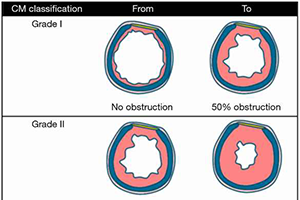Functional outcome after (laryngo)tracheal resection and reconstruction for acquired benign (laryngo)tracheal stenosis
Abstract
Background: In this study we focus on functional outcomes after (laryngo)tracheal resection and reconstruction for acquired benign (laryngo)tracheal stenosis, with a specific interest in the impact of laryngeal involvement on postoperative outcome.
Methods: All patients who underwent (laryngo)tracheal surgery for benign pathology between 1996 and 2017 in our centre were included in this retrospective study. Surgical outcomes were procedural success rate, and airway- and voice-related complications. Functional results were assessed using (standardized) questionnaires for quality of life, sensation of dyspnea, swallowing function, and voice perception.
Results: Of 119 consecutive patients, 47 underwent laryngotracheal resection and reconstruction and 72 underwent segmental tracheal surgery (78% with an end-to-end tracheal anastomosis and 22% with a cricotracheal anastomosis). Overall success rate was 92% and was similar for all groups, with an overall significant improvement in quality of life when compared to the preoperative situation. However, after laryngotracheal surgery, airway-related complications were more common when compared to segmental resections with an end-to-end tracheal anastomosis (30% versus 7%, P=0.003). Additionally, early voice alterations without recurrent nerve palsy were reported twice as often (34% versus 16%, P=0.034) and voice quality experienced during follow-up was significantly worse when compared to segmental resections. Overall response rate to the questionnaires on functional outcome was 63%.
Conclusions: (Laryngo)tracheal surgery is safe and beneficial, with significant functional improvement during mid- and long-term follow-up. However, laryngeal involvement is a predictor for increased surgical airway-related complications. Additionally, voice alterations without recurrent nerve palsy are far more common after laryngotracheal resection and are a serious handicap. This aspect is underexposed in current literature and deserves further attention during preoperative counseling and patient follow-up. However, the results on functional outcome of this current study should be interpreted with caution due to the somewhat low response rate of the questionnaires.
Cover






